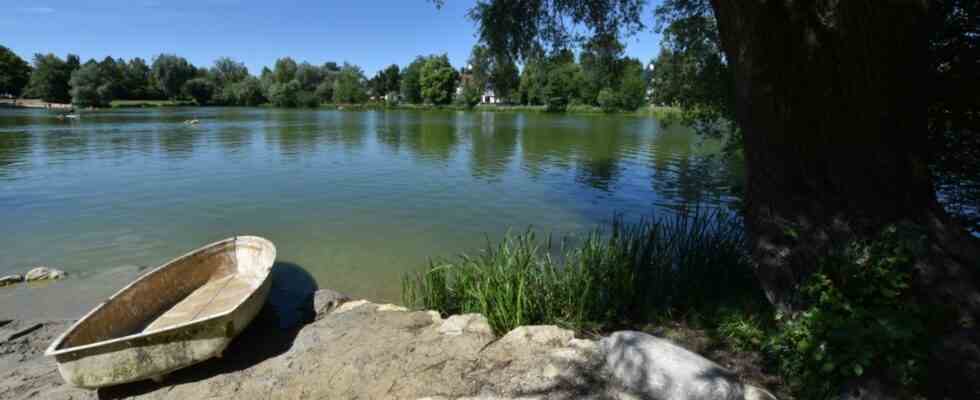The rain of the past few days, which nature and people have been eagerly awaiting, has not only brought blessings. As reported by the Munich district office, increased levels of coliform bacteria and enterococci have been measured at the Eisweiher in Ismaning and Deininger Weiher in Straßlach-Dingharting. The health department therefore urgently advises against swimming in the affected waters. Both municipalities have already drawn the attention of bathers to the situation with information boards.
According to the health department, the consequences for humans when they come into contact with these pathogens can be manifold. They ranged from diarrhea, vomiting, nausea, fever, respiratory infections to organ damage. The authority explains that people with a pronounced immune deficiency or with chronic or larger open wounds are particularly at risk. For natural waters, values of up to 1800 mpn/100 ml for coliform bacteria and values of up to 700 mpn/100 ml for enterococci are specified as the acceptable range.
At the Deininger Weiher, both values were significantly exceeded, at the Eisweiher in Ismaning only the value for coliform bacteria, the value for enterococci was still within the acceptable range. E. coli bacteria and enterococci are of course not raining down from the sky. According to the health authority, the bacteria can be introduced into lakes or rivers by people and animals, especially waterfowl, and happen both directly and, as is probably currently the case, indirectly through runoff, for example from agriculture into the water bodies. According to the authority, contamination occurs more frequently in rivers than in bathing lakes as a result of the use of receiving water and precisely because of the weather-related run-off during heavy rain. However, the treatment of wastewater with UV rays in sewage treatment plants on the Isar, which has been taking place since 2003, has significantly reduced the entry of pathogens into the Isar in the summer months.
After the rains of the past week, the Deininger Weiher in Straßlach-Dingharting is contaminated with coliform bacteria and enterococci.
(Photo: Sebastian Gabriel)
According to a spokesman for the authorities, E. coli bacteria die off more or less quickly in the environment, and enterococci could also survive longer. Weather-related contamination is usually only temporary, otherwise the potential sources of contamination would have to be determined. It is not uncommon for waterfowl to contribute to water pollution. Therefore, waterfowl should not be fed at the bathing lakes, so that the population does not continue to grow.
Are there other protective measures? In principle, it should be noted that in natural bathing waters, in contrast to swimming pools, the water is neither disinfected nor treated in any other way. Although this is what makes natural bathing water so appealing to many, it is also responsible for the fact that certain dangers, such as bacterial contamination, can never be completely ruled out. In addition to the microbiological risks, there is always a generally increased risk of accidents in natural bathing waters.

